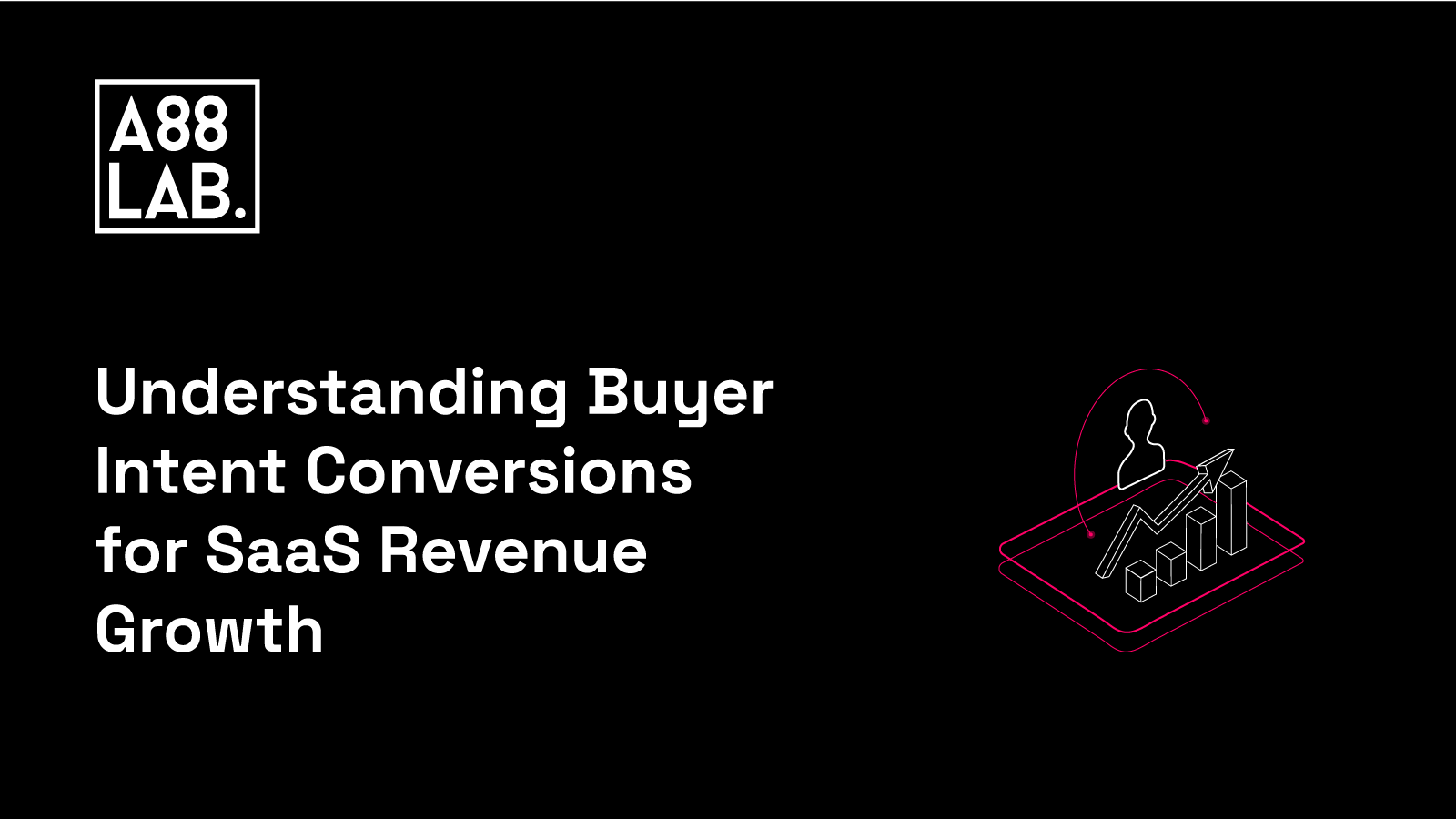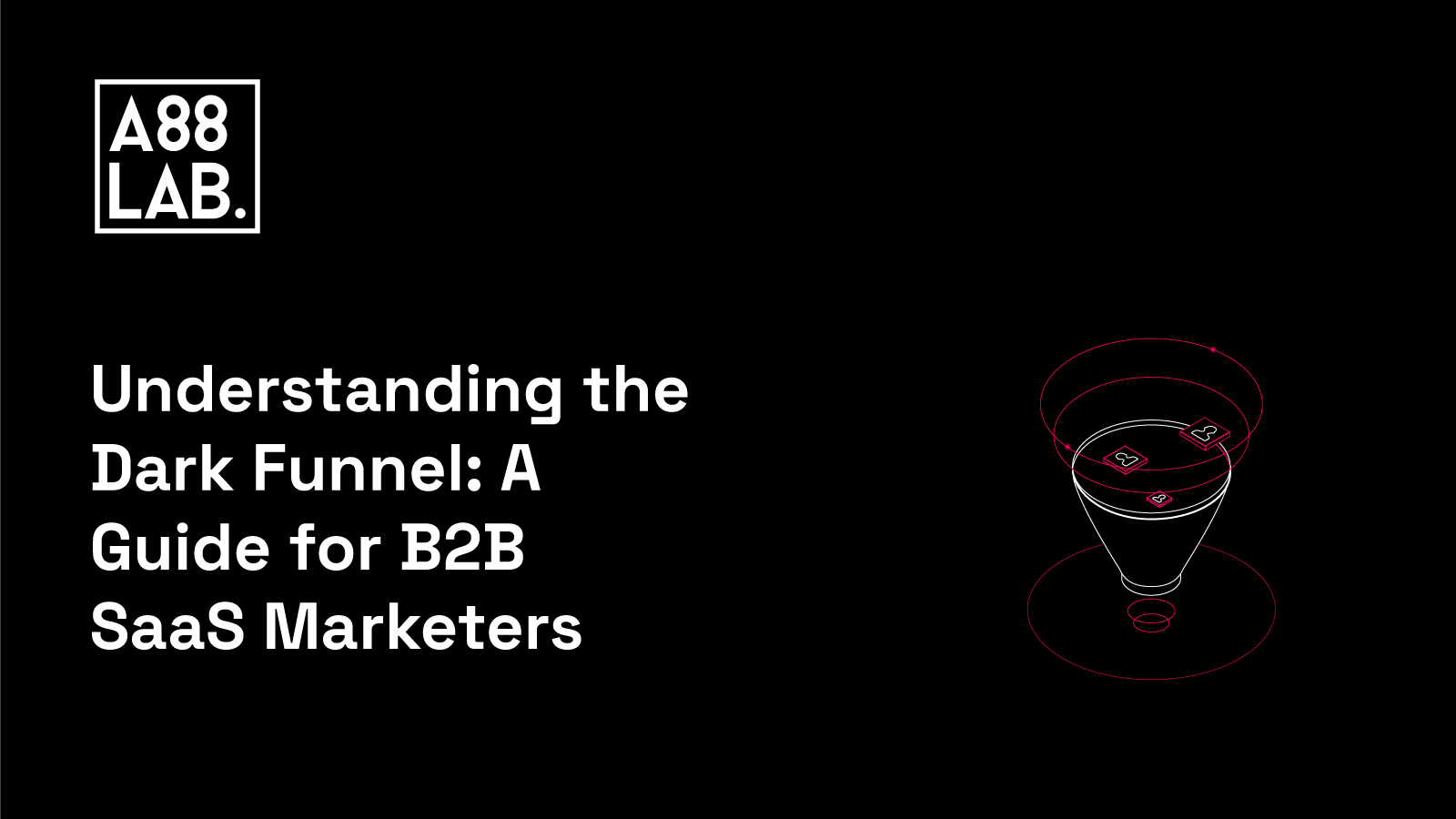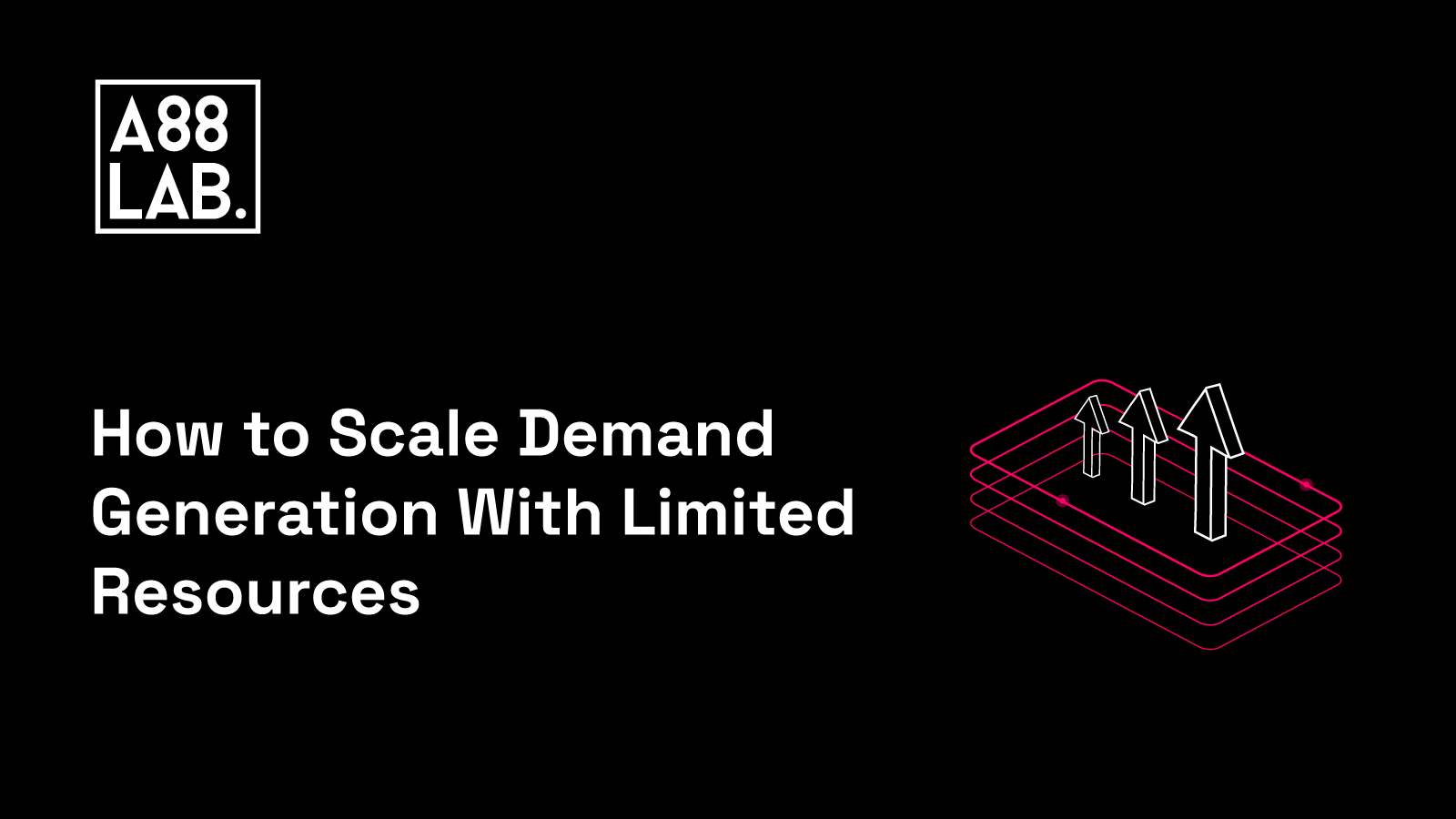Increasing revenue is a top priority for every SaaS business. However, achieving substantial revenue growth requires a smart marketing approach that considers different types of buyer interests. Understanding what motivates potential customers to buy will help you focus on the right target groups, personalize your approach, and improve your sales.
In this context, it's essential to differentiate between two types of buyer interests: "Declared Intent" and "Low Intent" conversions.
Declared Intent means customers actively want to buy, while Low Intent refers to those who are less sure or not ready to purchase.
By understanding these differences, you can create tailored marketing plans that lead to more growth and better revenue outcomes for your SaaS company. In this blog post, we will explore buyer intent, its importance, and how you can leverage it for revenue growth.
What is Buyer Intent?
Buyer intent is all about understanding the potential of each customer and planning your activities accordingly. It refers to how likely customers are to purchase your B2B SaaS product or service within a specific timeframe, usually the next 6 or 12 months. Different buyer intents leave behind specific behavioral signals that can help your company identify them during the buying process.
This metric is invaluable for marketing and sales professionals as it allows them to pinpoint the most promising target groups to focus their efforts on. By knowing the level of intent, they can personalize their marketing activities, increase conversion chances, and avoid wasting time on unlikely buyers. In essence, buyer intent is a powerful variable that guides your marketing strategy toward more effective revenue growth and improved attribution in your marketing and sales campaigns.
Not All Leads Are the Same: Differences between Declared Intent and Low Intent Conversions
Every customer arriving at your online platform, website, or social media has a unique goal in mind, leading to varied purchase intents. These intentions are closely linked to the stages of the marketing funnel, where a lead might be seeking information or be ready to make a purchase.
One of the biggest mistakes marketers make is relying solely on their ICPs.
Example 1:
Chief Digital Officer 1 in Company A and Chief Digital Officer 2 in Company B might perfectly fit your ICP, but they might have totally different intent. In Company A, CDO 1 might be already in a consideration phase because the maturity of the company, budget, and similar factors are way ahead in the process, while in Company B, the CDO2 might be only in the problem awareness phase. Therefore targeting this person with the same message, content, and campaigns is a definition of a poor quality pipeline, full stop.
Example 2:
Imagine your ICP details are as below:
Location: London, UK
Year of birth: 1948
Interests: Likes good food and wine, likes to travel, got married and divorced, has children, is rich, and is self-employed.

Prince Charles (credits for the image)
but also....

Ozzy Osbourne (credits for the image)
It doesn't mean if they fit your ICP criteria that you should target them with the same message.
Among the various types of buyer intent, two stand out as significant drivers of revenue growth: Declared Intent and Low Intent conversions. Let’s look at them in more detail.
Declared Intent
Declared Intent refers to potential customers who explicitly express interest in your SaaS product or service. They search for solutions on search engines, take actions such as signing up for a free trial, filling out contact forms, and actively seeking more information about your solution.
These customers demonstrate a higher level of interest, showing a strong inclination to explore your offers further. To capitalize on this intent-driven group, you need to have an appropriate approach.
When targeting buyers with "Declared Intent", it is important to focus on Demand Capture tactics. These buyers are already aware of their problem and actively seeking solutions through search engines like Google and Bing, as well as forums and communities such as Reddit and Quora. They also compare different vendors on platforms like Capterra, G2, and Product Hunt. To capture their attention, it is crucial to have a strong presence across relevant channels.To optimize marketing efforts for capturing demand, consider the following:
- Google and Bing Ads - As SaaS buyers with declared intent typically search for solutions on Google and Bing, ensure that your brand ranks high with strong PPC campaigns.
- Vendor Comparison Platforms - Build a product page on important comparison platforms like Capterra, G2, and Product Hunt. This enables buyers to make educated decisions by comparing existing solutions.
- Engage in Communities and Forums - Join and engage with communities and forums on platforms like Reddit, Quora, Facebook, and LinkedIn. Follow relevant hashtags and offer solutions to problems to build credibility and capture declared intent.
Offering additional valuable resources, such as guidelines, whitepapers, and blog posts, will further enhance the customer's journey and increase the likelihood of turning them into paying customers.
Low Intent Conversions
On the other hand, Low Intent conversions happen when users interact with your brand but don't explicitly show strong interest or take immediate steps towards making a purchase. These prospects may browse your website, read blog posts, or watch product demos without showing clear intent to proceed or taking any further action.
While they may not be ready to commit at the moment, it is essential to consider these prospects as valuable potential customers for the future. Instead of prioritizing them immediately, focus on building brand awareness and providing valuable content through blog posts, case studies, whitepapers, social media, educational webinars, etc. Remarketing or retargeting efforts can also be effective in reminding them of the value of your SaaS solution.
By striking the right balance between nurturing Declared Intent prospects and maintaining a presence for Low Intent conversions, you can optimize your marketing strategies to effectively cater to different stages of the buyer's journey. This strategic approach not only boosts revenue growth but also establishes a strong foundation for long-term success in the market.
Why Do Declared Intent Conversions Matter More?
Out of the two types of buyer intent, Declared Intent conversions are the ones you should prioritize for your SaaS business. Why? These prospects have already shown strong interest in your product or service, actively seeking out information, signing up for free trials, and engaging with your brand.
They raised their hands and said, "Hey, I'm genuinely interested in what you offer!"
The significance of these conversions lies in their potential to drive quicker and more impactful results for your business. When you prioritize Declared Intent prospects, you're focusing on those who are ready to take action. By providing them with personalized attention, tailored content, and a seamless onboarding experience, you can guide them through the sales funnel more efficiently, resulting in increased revenue.
Additionally, focusing on Declared Intent Conversions can significantly boost your sales velocity. A higher lead-to-win rate means faster closing deals and a shorter sales cycle. This not only means more revenue in the door but also a more streamlined and efficient sales process.
Optimizing Declared Intent Conversions
To make the most of Declared Intent conversions, employing targeted strategies can make all the difference in maximizing their impact. Here are a few approaches specifically tailored to these prospects:
-
Advanced Lead Qualification: Implement sophisticated lead qualification processes that predict the likelihood that a sales prospect will become your customer and gauge the level of intent expressed by potential customers. By focusing efforts on high-intent leads, you can allocate resources more effectively and generate a greater return on investment.
-
Personalization and Tailored Content: Craft marketing messages and content that match the characteristics, preferences, or behaviors with the declared intent of your target audience. By delivering personalized experiences and addressing their specific needs, your SaaS company can enhance the chances of converting high-intent leads into paying customers.
-
Conversion Optimization: Continuously optimize landing pages, calls-to-action, and conversion funnels to maximize the conversion rate for declared intent prospects. A seamless user experience and clear value proposition can significantly increase the chances of capturing these valuable leads.
-
Conduct Research into Buyer Keywords and User Interests: Leverage tools like Google Analytics to conduct research into buyer keywords and user interests. Understanding what drives your declared intent audience will help you refine your marketing messages and target them more effectively.
-
Run Post-Purchase Surveys: Consider running post-purchase surveys with a discount as a reward to gather insights into your audience's preferences and interests. This information can help you identify common social media accounts and online and offline communities frequented by your current audience, enabling you to tailor your marketing efforts accordingly.
Taking Advantage of Both Buyer Intent Types
While declared intent buyers should take center stage in driving your revenue growth, neglecting low intent conversions would be a missed opportunity. After all, a well-rounded approach that harnesses the strengths of both intent types can pave the way for a more comprehensive understanding of your target audience, resulting in improved conversion rates and increased revenue.
Here are some tactics that allow you to make the most of both declared and low intent conversions, ensuring no potential customer slips through the cracks:
-
Data Integration: Gather insights from multiple data sources, encompassing both declared and low intent actions, to gain a 360-degree view of user behavior, preferences, and interactions. By combining data from various touchpoints, you can paint a complete picture of your audience and tailor your strategies accordingly.
-
Personalization and Nurturing: Tailor personalized follow-up strategies for declared intent users, acknowledging their high level of interest and intent to buy. Provide them with targeted content and personalized recommendations to nurture their journey towards conversion. At the same time, don't overlook low intent users. Engage them with valuable and relevant content that guides them toward higher intent actions. By addressing their needs and interests, you can gradually build their interest and trust in your SaaS solution.
-
A/B Testing and Optimization: Continuously test and optimize your marketing campaigns, website design, and user experiences based on insights gained from both intent types. A/B testing allows you to experiment with different elements to identify what resonates best with each audience segment. By fine-tuning your approach based on real data, you can refine your strategies and boost conversion rates.
-
Remarketing and Retargeting: Build remarketing and retargeting tactics to keep your brand top-of-mind for both declared and low intent prospects. Remarketing allows you to re-engage high-intent users who have already shown interest in your offering. On the other hand, retargeting efforts can gently remind low intent users of the value and benefits of your SaaS solution, encouraging them to reconsider their decision.
By adopting a holistic approach that incorporates the strengths of both declared and low intent conversions, your SaaS company can gain deeper insights into your target audience, increase engagement, and drive revenue growth. Each intent type offers unique opportunities, and by leveraging them effectively, you can create a robust and successful marketing strategy that caters to a diverse range of potential customers.
The Role of the Dark Funnel in Converting Low Intent to Declared Intent Conversations
Hidden in the shadows of the internet lies the mysterious "dark funnel" - private and less trackable channels where people engage in online conversations and share content. Unlike traditional social media platforms, the dark funnel lacks clear referral data, making it challenging for businesses to track the sources of their website traffic and understand customer interactions.
However, it plays a significant role in shaping purchasing decisions, considering that most people prefer private messaging apps, email, or direct shares for information exchange. And that's precisely why SaaS companies have to develop strategies that allow them to tap into the dark funnel's potential.
Some simple strategies you can implement include:
-
Engaging in Relevant Groups and Communities: Identify and join online groups and communities where your target audience actively participates. Share valuable content like blog posts, videos, and infographics that directly address their pain points. Engage in discussions and respond to comments to showcase your expertise and build trust. You may even offer exclusive free trials or discounts to pique their interest, but we suggest avoiding being overly promotional.
-
Join Podcasts and Online Events: Join industry-related Podcasts and Online Events where you can talk about potential problems and challenges your target market is facing and how your solution can fit in and help them solve their problems.
-
Participate in Industry-related Meet-ups and Off-line Events: Actively participate as a sponsor, speaker, or a visitor in third-party events related to your industry. These events attract your target audience, making them an ideal platform to showcase your expertise and offerings.
Whatever you decide to do, make sure your engagement in dark funnel channels is value-driven, authentic, and focused on addressing the needs of customers showing tendencies of a declared intent buyer.
The Role of Buyer Intent Data in Demand Generation
By now, it should be clear that buyer intent data is a powerful tool that can significantly enhance your demand generation efforts. By providing valuable insights into potential customers' behaviors and interests, intent data allows you to optimize your marketing strategies and drive better results.
Here's how it can help with demand generation:
-
Precise Targeting: Intent data enables you to identify prospects who are actively researching solutions similar to your offering. With this knowledge, you can precisely target high-intent prospects, ensuring that your marketing messages reach the right audience at the right time.
-
Personalized Messaging: Understanding buyer intent allows you to tailor your marketing messages and content to align with the specific needs and interests of potential customers. By delivering personalized experiences, you can create more meaningful connections with your audience, increasing engagement and conversion rates.
-
Lead Prioritization: With intent data, you can prioritize leads based on their level of interest and readiness to buy. This ensures that your sales and marketing teams focus their efforts on the most promising prospects, optimizing resource allocation and maximizing ROI.
-
Competitor Insights: Intent data can also provide insights into prospects' interactions with your competitors' products or services. This information gives you a competitive advantage, allowing you to position your offering effectively and compete for business opportunities.
-
Data-Driven Decision Making: By analyzing intent data, you can make data-driven decisions and refine your demand generation strategies. You can identify trends, evaluate the effectiveness of your campaigns, and adjust your approach accordingly for better results.
-
Reduced Sales Cycles: With better-targeted messaging and personalized experiences, intent data can help shorten sales cycles. By engaging prospects with relevant content and timely interactions, you can move them through the buying journey more efficiently.
-
Improved ROI: Leveraging intent data enables you to optimize your marketing efforts, reducing wasteful spending on irrelevant leads and maximizing your return on investment. By focusing on high-intent prospects, you can achieve higher conversion rates and revenue growth.
Final Words
When striving to increase your revenue, understanding the characteristics of your declared intent and low intent buyers and making the distinction between them will help you figure out which appropriate tactics and strategies you need to implement for each customer to achieve this goal.
Declared intent conversations have the most significant impact on your revenue, so understandably, they should always be your first priority. Recognize and nurture these prospects through personalized marketing efforts; this will help you to achieve substantial growth.
Remember, low intent conversations also have the potential to be converted into declared ones, so don't overlook them. Implement an approach that combines the strengths of both intent types and has a comprehensive understanding of the target audience, which will ultimately result in better conversion rates and increased revenue.
.png)


